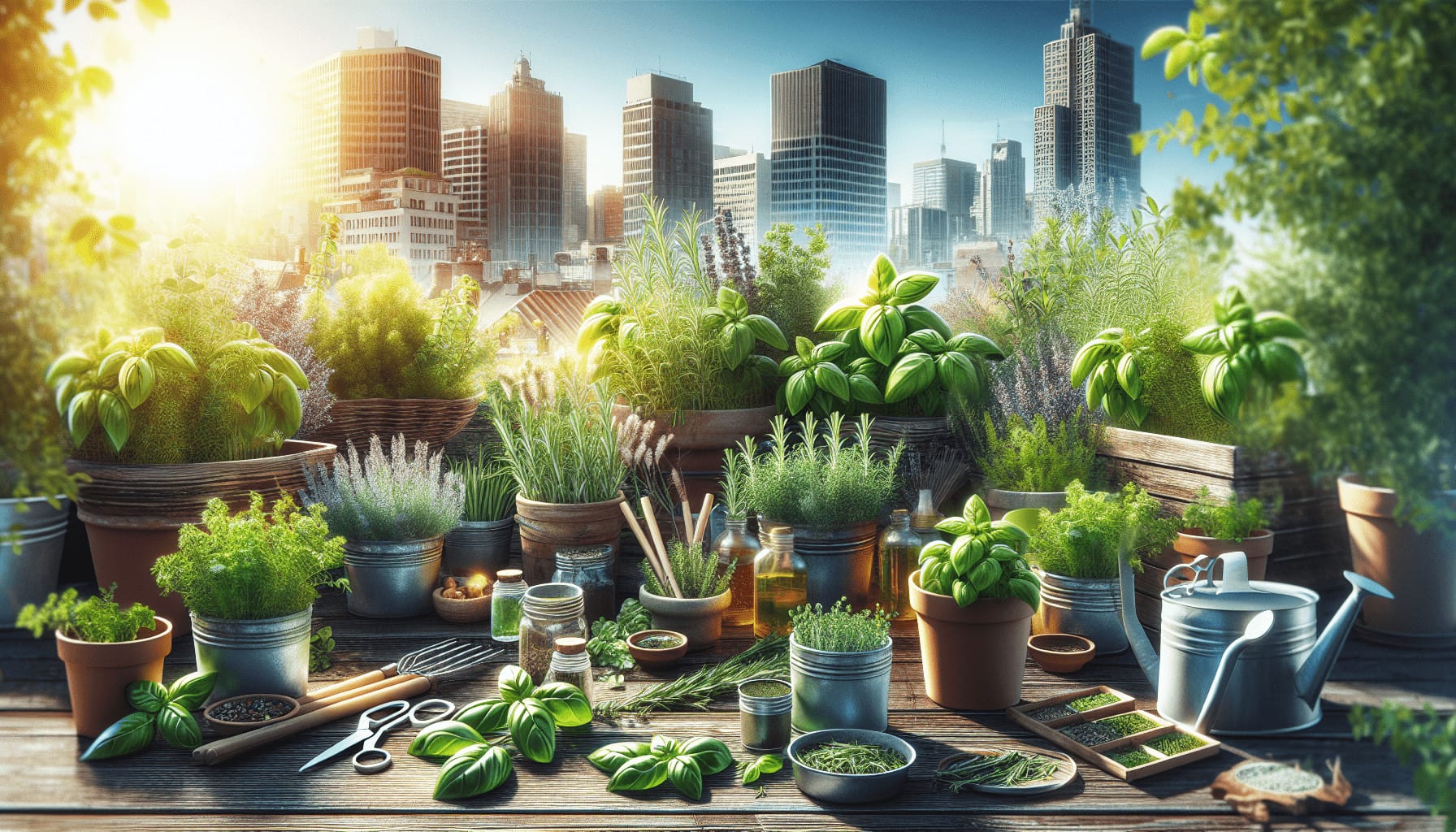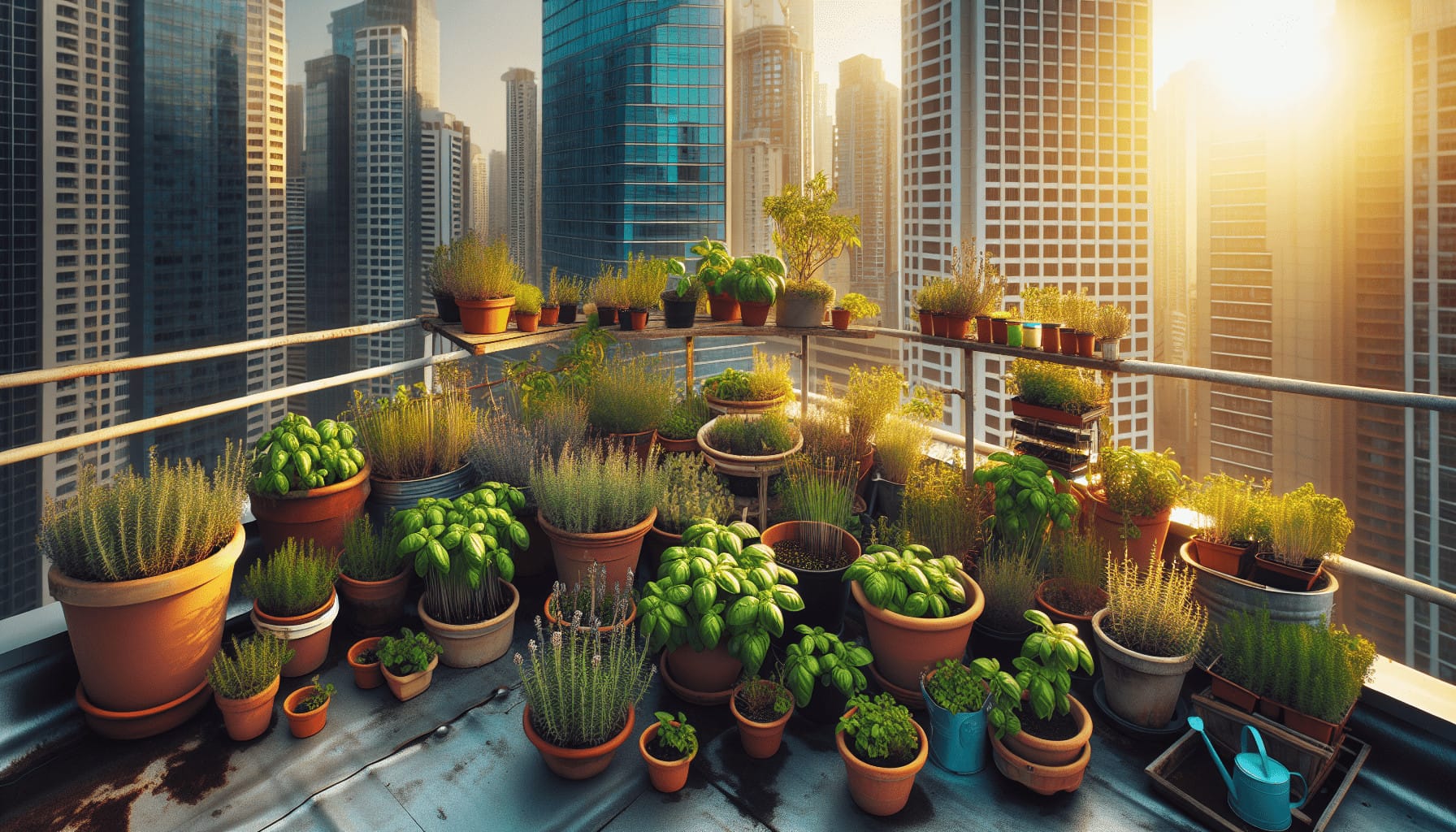How To Harvest And Preserve Herbs From A Rooftop Garden
Have you ever wondered how to make the most out of your rooftop garden by harvesting and preserving herbs? In this article, we will guide you through the process step by step, from harvesting your fresh herbs to preserving them for future use. Let’s get started!

Choosing the Right Time to Harvest
When it comes to harvesting herbs from your rooftop garden, timing is key. The best time to harvest herbs is in the morning after the dew has dried but before the sun is at its peak. This is when the herbs are at their freshest and most flavorful.
Why timing is important:
Harvesting herbs at the right time ensures that you get the best flavor and aroma from your herbs. It also helps preserve the nutrients and essential oils present in the herbs.
Tools You Will Need
Before you start harvesting your herbs, make sure you have the right tools on hand. Some essential tools for harvesting herbs include a sharp pair of scissors or gardening shears, a clean cutting board, and a basket or container for collecting the herbs.
The importance of using the right tools:
Having the right tools for harvesting herbs will make the process easier and more efficient. Sharp scissors or shears will ensure clean cuts that promote healthy growth in your herb plants.
Harvesting Techniques
Different herbs require different harvesting techniques, so it’s essential to know how to harvest each herb properly. In general, you should cut herbs above a leaf node to encourage new growth. Avoid cutting more than one-third of the plant at a time to allow the plant to recover.
Tips for harvesting common herbs:
- Basil: Pinch off the top leaves just above a leaf node to encourage bushy growth.
- Mint: Cut the stems just above a leaf node to promote new growth.
- Rosemary: Cut the stems with sharp shears or scissors, avoiding woody parts.
Cleaning and Preparing Herbs
Once you have harvested your herbs, it’s essential to clean and prepare them before preserving them. Start by removing any damaged or discolored leaves, then give the herbs a gentle rinse under cold water to remove any dirt or insects.
Why cleaning herbs is important:
Cleaning herbs helps remove any impurities that may affect the flavor and quality of the herbs. It also ensures that your preserved herbs are safe to consume.

Preserving Herbs Using Different Methods
There are several ways to preserve herbs from your rooftop garden, depending on the herb and your preference. Some common methods include drying, freezing, and using them in infused oils or vinegars. Each method has its advantages and is suitable for different types of herbs.
Drying herbs:
Drying herbs is one of the oldest and most traditional methods of preserving herbs. To dry herbs, tie them in small bundles and hang them upside down in a dark, well-ventilated area. Once the herbs are dry, store them in airtight containers away from direct sunlight.
Freezing herbs:
Freezing herbs is a quick and easy way to preserve their flavor and aroma. To freeze herbs, finely chop them and place them in ice cube trays filled with water or olive oil. Once frozen, transfer the herb cubes to a freezer-safe bag or container for long-term storage.
Infusing oils or vinegars:
Infusing oils or vinegars with herbs is a great way to add flavor to your dishes. Simply add fresh herbs to a bottle of olive oil or vinegar and let them infuse for a few weeks. Strain out the herbs and store the infused oil or vinegar in a cool, dark place.
Storing Preserved Herbs
Proper storage is essential to ensure that your preserved herbs stay fresh and flavorful for as long as possible. Store dried herbs in airtight containers away from heat and sunlight, frozen herbs in a freezer-safe bag or container, and infused oils or vinegars in a cool, dark place.
Tips for storing preserved herbs:
- Label all containers with the name of the herb and the date of preservation.
- Check stored herbs regularly for any signs of spoilage, such as mold or discoloration.
Utilizing Preserved Herbs in Cooking
Now that you have successfully harvested and preserved herbs from your rooftop garden, it’s time to enjoy the fruits of your labor by using them in cooking. Preserved herbs can add flavor and aroma to a wide range of dishes, including soups, stews, salads, and marinades.
Why using preserved herbs is beneficial:
Preserved herbs allow you to enjoy the taste of fresh herbs year-round, even when they are out of season. They are a convenient and cost-effective way to add flavor to your dishes without the need for fresh herbs.
Final Thoughts
Harvesting and preserving herbs from your rooftop garden is a rewarding experience that allows you to enjoy fresh, flavorful herbs throughout the year. By following these simple steps and techniques, you can make the most out of your herb harvest and savor the taste of your rooftop garden in every dish you prepare. Happy harvesting!
